how our brains learn
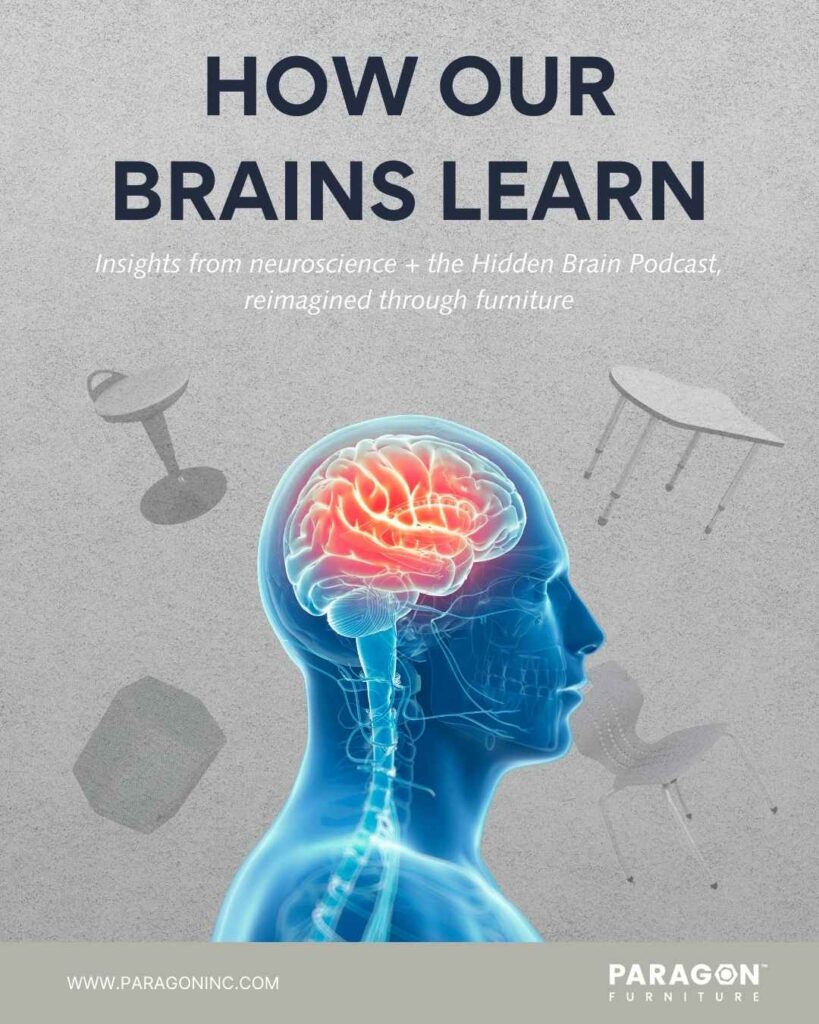
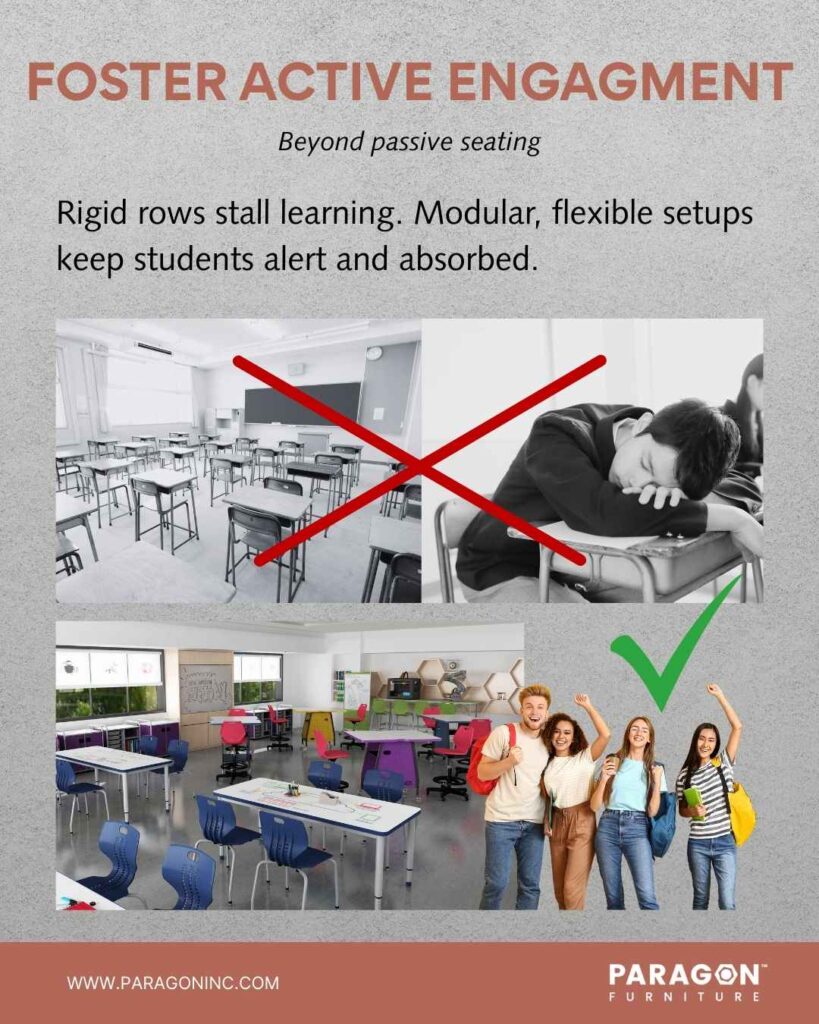
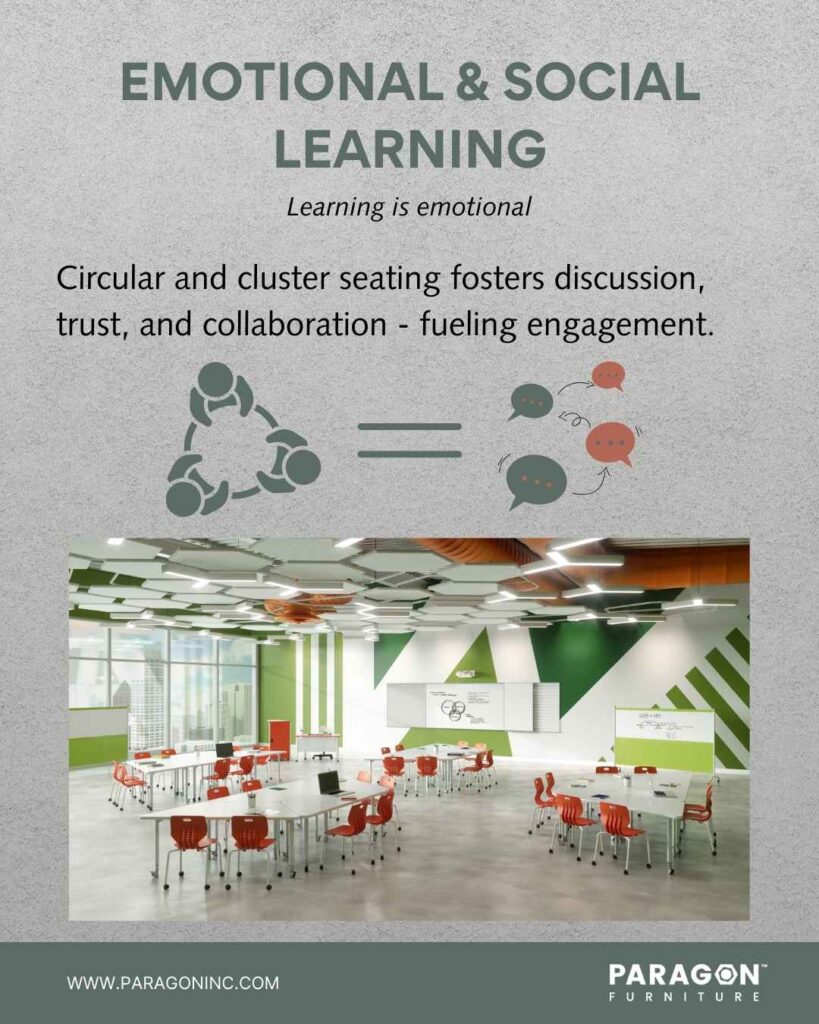
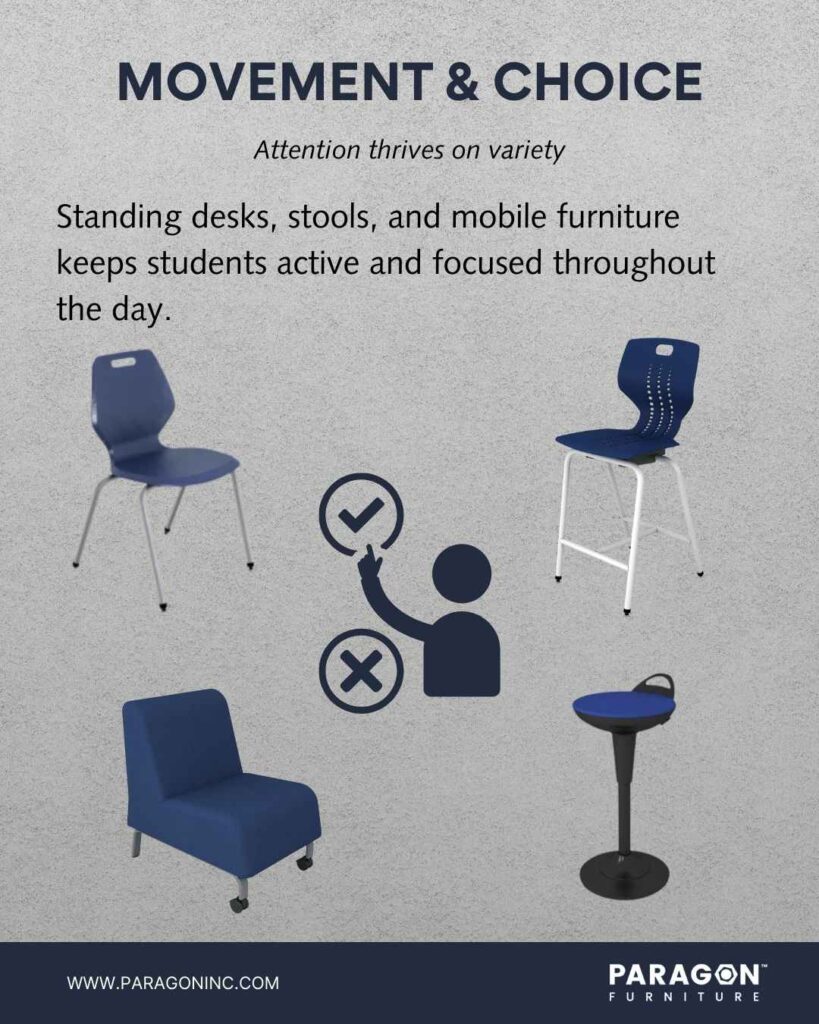
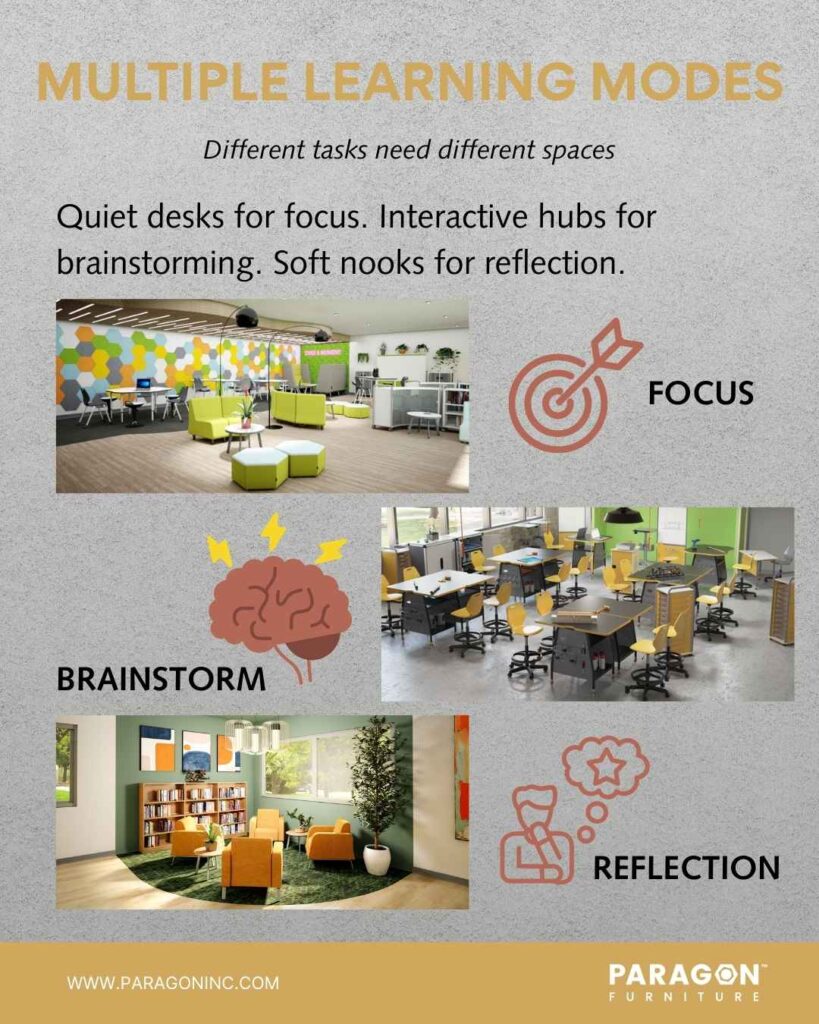
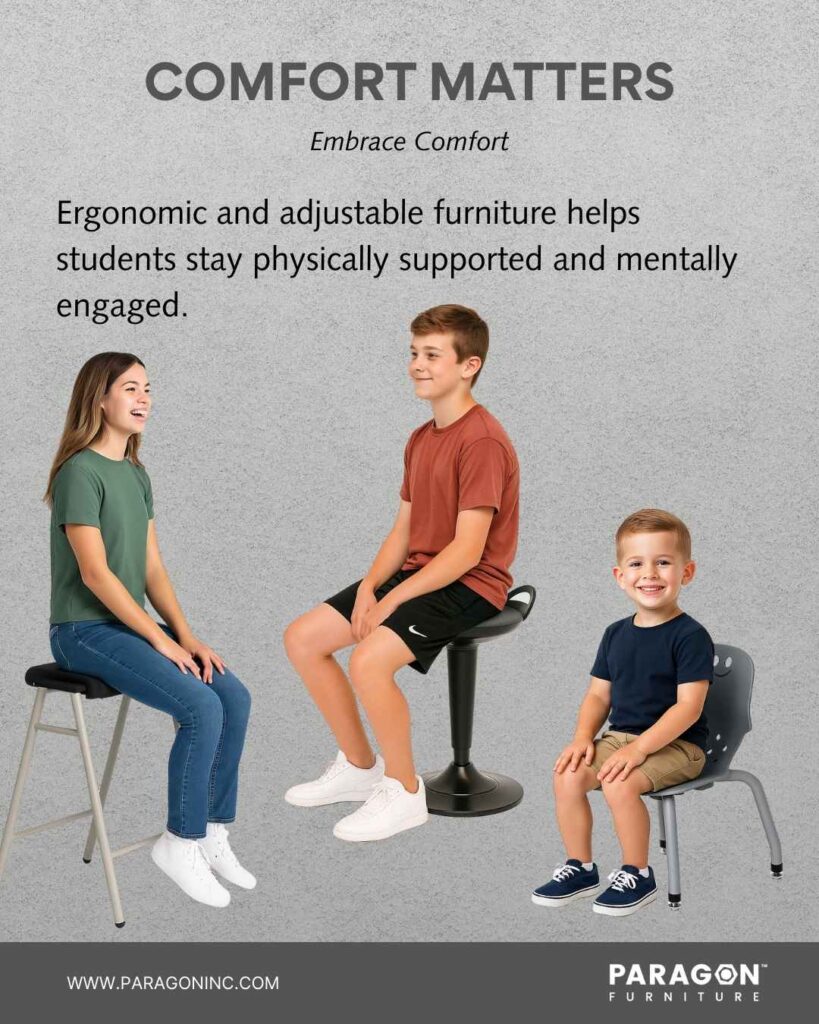
From flexible seating and movement-friendly layouts to ergonomic comfort and thoughtfully designed learning zones, classroom furniture plays a powerful role in shaping how students engage, focus, and thrive. Discover how intentional, brain-informed design supports cognitive, social, and emotional development—creating spaces that foster curiosity, collaboration, attention, and lifelong learning.
Listen to the full Hidden Brains: How our Brains Learn Podcast:
Designing School Furniture That Boosts Brain Engagement
Educators and neuroscientists agree: learning isn’t just about absorbing information, it’s about engagement. When students are alert, emotionally connected, and physically comfortable, their brains are primed to learn. Insights from the Hidden Brain podcast, alongside the work of researchers like Dr. Mary Helen Immordino-Yang, show that the way classrooms are designed—including the furniture—can either support or stifle that engagement.
By intentionally designing learning spaces that align with how the brain works, schools can create classrooms where focus, creativity, and collaboration thrive.
Foster Active Engagement, Not Passive Seating
The brain disengages quickly when learning feels passive. A teacher lecturing to rows of silent students often leads to wandering attention and shallow learning. Neuroscience shows that active engagement, being absorbed, curious, and alert, is the key to deeper memory formation and problem-solving.
Furniture implications:
- Modular, flexible seating: Arrangements that can quickly shift from rows to clusters encourage students to be participants rather than spectators. Whether it’s a small group discussion, project work, or peer teaching, flexibility keeps energy high.
- Standing desks or stools: Allowing students to vary posture reduces fatigue and helps them stay mentally alert, turning the classroom into a dynamic, interactive environment.
In practice: A classroom equipped with tables on wheels can shift from lecture layout in the morning to group pods in the afternoon, maximizing engagement without wasted time.
Support Emotional and Social Engagement
According to Dr. Immordino-Yang, emotions are not separate from learning, they are fundamental to it. Students remember more, think more critically, and take greater risks when they feel emotionally connected and socially supported. Engagement, therefore, is both cognitive and emotional.
Furniture implications:
- Circular and cluster seating: Arranging students in circles or semi-circles encourages eye contact, shared dialogue, and active listening — key drivers of empathy and connection.
- Breakout zones: Soft chairs, ottomans, or stools arranged in clusters give students places to collaborate in smaller groups or decompress with peers. These spaces nurture trust, belonging, and creativity.
In practice: A classroom with a mix of group tables and cozy side nooks gives introverted and extroverted learners alike a chance to connect in ways that feel natural.
Encourage Movement and Choice
The brain isn’t built for hours of stillness. Shifting environments or changing physical positions stimulates attention and supports better learning outcomes. When students have choice—in how and where they sit—they also feel a greater sense of autonomy, which research shows boosts motivation.
Furniture implications:
- Variety of options: A blend of traditional chairs, stools, beanbags, standing setups, and soft seating lets students choose what supports their learning style.
- Mobile furniture: Lightweight, stackable, or foldable designs allow classrooms to transform easily throughout the day, keeping environments fresh.
In practice: Giving students the option to stand at a tall desk during independence work or shift to a beanbag for reading not only refreshes attention but also promotes ownership of their learning.
Creating Zones That Reflect Different Learning Modes
Not all learning happens the same way. Sometimes students need quiet focus; other times, they need collaboration or reflection. Immordino-Yang’s research shows that context and grouping matter: when spaces are intentionally designed for different modes of engagement, students’ brains respond more fully.
Furniture implications:
Quiet focus zones: Individual desks with acoustic panels or dividers to minimize distractions.
Interactive hubs: Tables near whiteboards or writable surfaces where students can brainstorm, problem-solve, and present ideas.
Reflective corners: Lounge seating or soft cushions in cozy nooks that encourage self-paced reading and personal reflection.
In practice: A single classroom can serve as a “mini-campus,” with zones dedicated to different modes of thinking—just like workplaces that balance focus rooms with collaborative hubs.
Embrace Comfort to Sustain Attention
While engagement is key, comfort is the foundation. Physical discomfort distracts from mental focus, cutting learning short. Ergonomics matter: when students are supported physically, their brains can stay in the task longer.
Furniture implications:
Ergonomic seating: Chairs that promote healthy posture reduce fatigue and discomfort, especially during long stretches of work.
Adjustable-height options: Desks and tables that can adapt to students of different sizes—and allow shifts between sitting and standing—ensure inclusivity and long-term focus.
In practice: Adjustable-height desks allow a 4th grader and a 6th grader to share the same space comfortably, while also giving them the option to sit or stand depending on the task.
Why It Matters
When schools design environments based on how the brain learns, rather than traditional norms, they unlock:
- Greater student engagement and alertness.
- Stronger social and emotional connections.
- Higher cognitive flexibility and focus.
- Better adaptation to diverse learning styles.
By designing with the brain in mind, educators can transform classrooms from static spaces into dynamic environments where every student has the opportunity to thrive.
